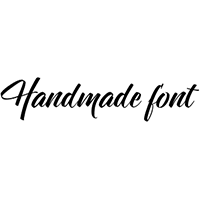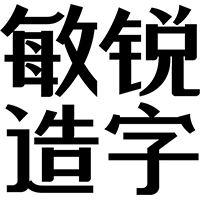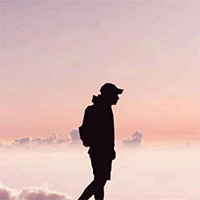My Type of Music: Oasis, Kelis, Big Boi, The Steve Miller Band, M.I.A., Crowded House, Morcheeba, R.E.M.

The July 2010 episode of My Type of Music is a little early, because I am leaving for a vacation with my wife and children. Posting this after we get back isn't really an option. That would make this instalment quite late, and have it interfere with the publishing schedule of ScreenFonts. The last batch of album reviews of this month are missing, but it's the middle of summer so that shouldn't be too many. Maybe I manage to insert them in the next episode. Regarding ScreenFonts – the movie posters for the new episode have already been prepared and uploaded, which means it should be posted in a timely manner as well. Enjoy the read, and see you all when I'm back in Belgium.

To me the choice of typeface on the cover for Goon Affiliated, the fourth album for Florida rapper Plies, seems a bit random. Just like Trajan, Penumbra is the obvious choice for a classic and epic look. It looks completely out of place in combination with the image of the masked goon the album title is alluding to. The only reference I can think of is sports caps and hoodies, with the outlined red and white type, but even then the setting and placement feel way too tame and confined for the subject matter. I'd have expected a less polished typographic treatment, more brutal and in-your-face, to match the visual.


The cover for Time Flies… 1994–2009, the two-CD compilation of hit singles by Oasis, reprises the classic logo of this major band from the Brit-pop scene. As you can see in the overview above, the all lowercase Helvetica Black Italic in a black frame with white border was used consistently in the first four albums (although the collection of B-sides The Masterplan features a variant design). Coincidence or not, an entirely different logo adorns their two least successful albums, and Don't Believe The Truth, the album that heralded the renaissance of Oasis, again sports their original logo. There is a lot of variation in the album titles, ranging from hand written (Definitely Maybe), over Helvetica Compressed ((What's The Story) Morning Glory?), TC Europa Bold (Standing On The Shoulder Of Giants), to rough brush caps (Dig Out Your Soul). For Time Flies… 1994–2009 Bureau Grot was used, David Berlow's take on the quintessential English nineteenth-century sans, developed from original specimens of the grotesques released by Stephenson Blake in Sheffield.
The photograph on the cover is perfect. It was taken at the record-breaking weekend at Knebworth. At this stage of Oasis' career they were top of the Britpop pile and were looking for the next big conquest. The immensity of the crowd brings home the success of the band better than any group portrait could.

There is not always need for custom type to have personalised typography. Judiciously adapting retail type can go a long way at giving it a unique look and feel. On the cover for We Walk This Road, Robert Randolph And The Family Band's collection of songs representing the roots of 20th century American music, a couple of incisions in the H&FJ Gotham caps lend it that made-to-measure appearance.

How not to do custom type can be seen on Aphrodite, more dance-floor slammers and pure pop hits by Kylie Minogue. Again there is a discrepancy between image and typography. The Australian songstress is portrayed as the Greek goddess of love Aphrodite, yet the choice of type doesn't really convey the loftiness nor mythical grandeur one would expect it to.
It starts quite poorly with the artist's name. Properly spacing and kerning "Kylie" in all caps setting is a tough nut to crack – compare the first character pair with the last one. As a general rule, don't hesitate to kern a capital K and Y until the adjacent top serifs touch. Their structure creates a huge gap, causing the space between them to always look bigger than a similarly spaced I E pair. Then the custom type used for the album title looks weird. The shapes of the A, H, and E don't harmonise with the rest of the letters. They remind me a little bit of "something straight out of a porn movie for aliens" in the Shakira thread we once had on the Typophile Type Identification Board. I am not saying they should have gone the faux Greek route, but this is not really working for me.

latest instalment of ScreenFonts. This cover design is a contemporary interpretation of Art Deco, and gets all the details right (except maybe the black bar with the album title in Futura caps at the bottom; the time period is about right, the style I am not so sure). Kelis' pose and attire channels pre-WWI silent movies, specifically Fritz Lang's cinematographic masterpiece Metropolis. The photograph is beautifully matched with geometric ornaments and Art Deco-inspired lettering. I detect a hint of Bifur, a whiff of Miserichordia.

If you need to relate the design to an artistic trend, I'd categorise the cover for the self-titled debut EP by How To Destroy Angels – the collaboration of Nine Inch Nails' Trent Reznor with his wife Mariqueen Maandig and Atticus Ross – under Surrealism. The album cover was art directed by long-time Nine Inch Nails collaborator Rob Sheridan; FontFeed reader Reinhard Thomas revealed the collage on the cover is by Mark Weaver. Once you make abstraction of all the details it hits you how simple the composition of the image is, with the menacing red globe (a dying sun?) positioned above the half-buried skull exerting a mesmerising influence on the viewer. In the upper left corner the knocked out square sans serif typography inexorably draws your attention; not by showing off, but on the contrary due to its unassuming appearance under that restrained white rule. This is dark, great looking stuff.

I also wanted to show the logo for the band, as found on their website, for its interesting take on the classic ITC Avant Garde Gothic Alternate cap ligatures. The missing parts of the characters create an interesting stencil-like composition.

Another great design in the same vein as the How To Destroy Angels cover is this one. Mysterious monolithic shapes were rotated to create a warped symmetrical image on the cover for Subiza by Delorean, the electronic quartet from Spain. The band name in tiny spaced-out multi-coloured Cheltenham caps is so weird but oddly fitting, and the album title looks like the artist's signature punctuating the work of art.

For all its purple bling on Sir Lucious Left Foot: The Son Of Chico Dusty, the solo album by OutKast's Big Boi, I am rather disappointed at how unimaginatively the type was integrated in the cover image. Well, "integrated" is being too kind – it is simply spread out over the open areas, taking up all the white (and black ; ) space. This results in a very flat cover, without any definable focus point. The multilinear letters look custom designed, although they do remind me of the Mexico 68 Olympics logo. The artist's name in the shield is most probably custom as well. Despite it having been pimped the album title is easily recognisable as the late 80s Letraset script Rapier.

For some reason I immediately associated the cover for Antifogmatic – the second album for Punch Brothers, the bluegrass five-piece band led by Chris Thile – to the collage animations by British comedy giants Monty Python. One could also make a link with Glen Baxter's curious contraptions. The typography looks very Wild West. I couldn't locate the condensed Tuscan nor the copperplate script, but it's not unlikely this could be hand lettering. FontFeed reader David Kelly e-mailed me that the script is Burgues Script by Alejandro Paul at Sudtipos. He comments: "All those alternate glyphs and swashes and curls do indeed make it look hand lettered."

How I wish the type on Part II: The New December, by "Los Angeles art school weirdos" Fol Chen had been dynamically integrated in that black fragmented shape. Think of the myriad possibilities: the knocked out characters interacting with the capricious outline, some of them half visible and only recognisable through context. Instead the type just sits there, asinine, in its tired News Gothic silhouette.

This is funny. The band logo on Crush Depth by Chrome Hoof, the experimental group led by Cathedral bassist Leo Smee and his brother Milo, looks ridiculously over the top heavy metal design. Yet the intriguing geometric design with its grainy texture, in combination with the equally ridiculous Letraset display face Shatter, elevate this design to a level of irony making it acceptable again.

The pared-down design for Beach Fossils, the eponymous debut album for the lo-fi indie band led by Dustin Payseur, is a bit of a let-down. I think it's mostly the cop out of using all lowercase Helvetica that doesn't sit right with me. Boring.

Aha, I do recognise the classics. A quick search confirmed that the artwork for Bingo!, the blues and R&B covers album for the California-based Steve Miller Band, is by Storm Thorgerson – the geometric sans caps with the peculiar G on his website are Bureau Eagle Light. Thorgerson is known for his iconic covers for Pink Floyd, as well as more recent work like Audioslave's 2002 self-titled album and The Offspring's 2003 album Splinter. With an image so imaginative and overpowering the typography understandably takes a back seat; in this case all caps Gill Sans.

Disconnect From Desire, a trip into the lush land of dream-pop by New York trio School of Seven Bells has a very basic cover design featuring an intriguing symbol. The interview with SVIIB's Benjamin Curtis on the Music Slut reveals the sign is an alphabetical reduction of a concept.
We were having a conversation with Bryan Collins, who also did the artwork for Alpinisms, about symbols and iconography, which at the time we all happened to be interested in independently. We were discussing the personal, and emotional aspect to the new music, and Alley mentioned this idea of a "Sigil", which is an interesting concept if you're feeling brave and want to wade into the deep end of these sort of new age-y concepts. But, the concept is actually pretty powerful. The idea is to write a statement of intent, or something you want to put out into the universe, and then reduce the words down systematically to just a few letters. Then, you make a design out of what is left that isn't recognizable from what it's made from. Bryan was floored by the idea and went to town. I love it because it's become a unique symbol that contains the words "Disconnect From Desire" and all the ideas behind it. Symbols and icons can be really fun like that.
And I hate to admit defeat, but I couldn't locate the serif face at the top. The nagging feeling I was overlooking something obvious was confirmed when the formidable Jan Erdmann identified it as Bell. It's reassuring to know I have the kick-ass team of the Typophile Type Identification Board watching my back.

I don't understand the need of certain artists to have unsearchable and/or unpronounceable band names or album titles – I'm looking at you !!! ! This is also the case for /\/\/\Y/\, the third album of eclectic, bold beats by Sri Lankan-born, UK-based rapper M.I.A. The sequence of slashes/backslashes plus a Y creating the album title may be consistent with the highly experimental nature of both album cover and website – the artist's face is covered with MP3 progress bars, and her name is composed with gold bars! – but it seriously confounds Google. And me.

Dark Night Of The Soul, the collaboration of Danger Mouse and Sparklehorse with vocals by such artists as The Flaming Lips, Super Furry Animals' Gruff Rhys, Jason Lytle, the Strokes' Julian Casablancas, Frank Black, Iggy Pop, the Shins' James Mercer, Suzanne Vega, Vic Chestnut, the Cardigans' Nina Persson, and David Lynch, has a suitably dark album cover – both literally and figuratively. The ghost image in the lower left corner of someone screaming seems to come straight out of a David Lynch movie. In the opposite corner irregularly stacked typography provides the perfect counterbalance. The trio of typefaces – Matrix, a Bodoni (can't be bothered to identify the specific digitisation), and Helvetica Condensed – feels quite cinematic, as if we're looking at a movie poster or credits title sequence.

The cover for Intriguer, the sixth album since Neil Finn first formed Crowded House 25 years ago, strikes an eerie balance between cutesy and creepy. Check those menacing cuts in the vintage teddy bear illustration, that hand lettered type (similar to FF Providence) burnt into the wood, and the drops of blood running down from the buttons in the Os …

Symphonicities, which finds Sting influenced by symphonic arrangements from the Royal Philharmonic Concert Orchestra, features a minimalistic geometric cover design with all caps Futura, some sort of re-imagining of the Bauhaus style.

Along the same lines, but with a more hand made quality is the cover for Blood Like Lemonade, Morcheeba's seventh studio album which sees Skye Edwards return as lead singer. The hand crafted character of both the Saul Bass-inspired typeface Hitchcock and Cubanica's Vitrina nicely complement the cut out motif, reminiscent of Henri Matisse's gouaches découpés.

Now this is an intense cover. The model on Apparitions, the debut full-length album for the Chicago-based foursome Light Pollution looks like she's gone through a rough patch. Add to this the stigmata marks on her hand and the painted white rays emerging from her eye, and the whole design takes on an grimy religious atmosphere. I am not really a fan of this anorexic weight of Helvetica, but the partial overlapping of band name and album title cleverly reprises the double exposure of the photograph.

There's no way the album cover for Fables Of The Reconstruction, the 25th Anniversary Edition of alternative rock icons R.E.M.'s third album, can disguise this is a reissue of an eighties album. All the elements are here – the symbolism of the burning book, the bizarre hues, the inset photographs of the band members in the four corners, the texture in the spaced out caps in Univers 49 Light Ultra Condensed, the garish fuchsia/purple band name in worn serif caps. For more very condensed sans faces refer to our Skyline Sans FontList.
And now I really have to sign off, because we have a train to the airport to catch. Talk to you later!



































 闽公网安备35010202000240号
闽公网安备35010202000240号